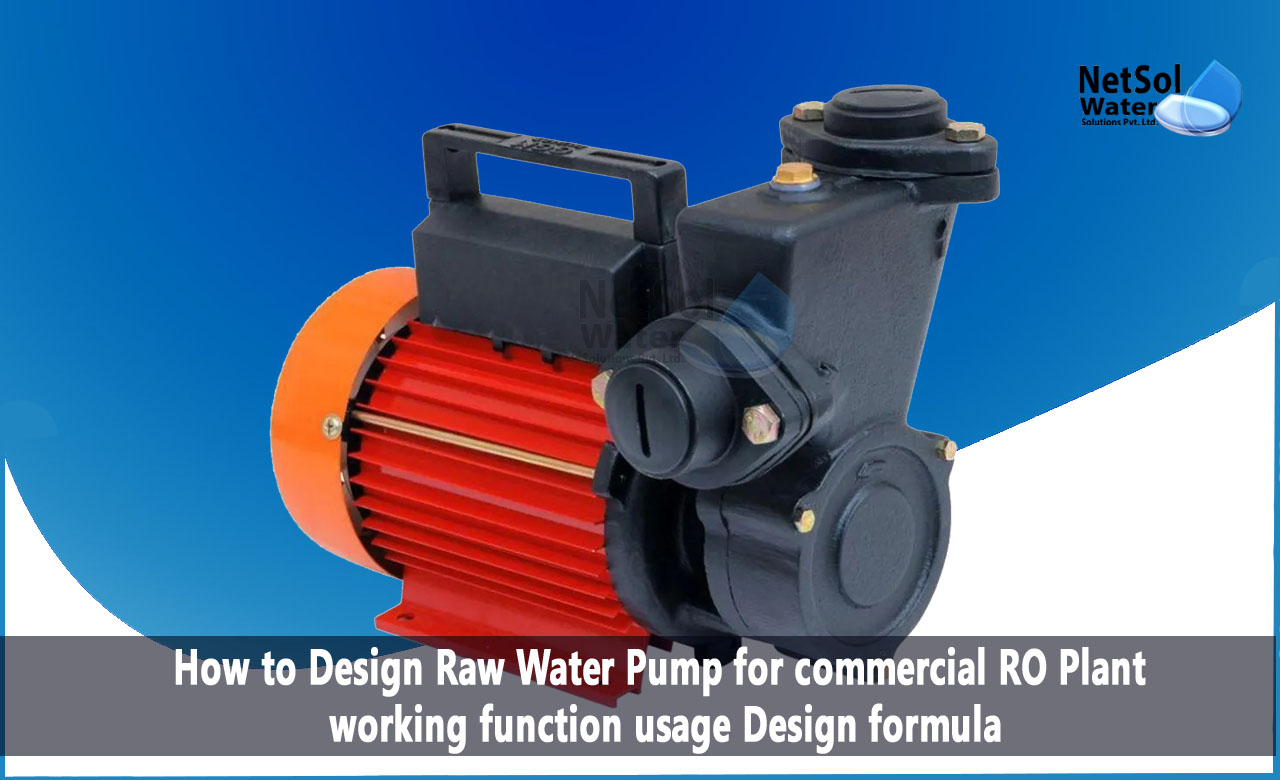Design Raw Water Pump for commercial RO Plant – Design Calculation
Raw water pump plays a crucial role in the commercial reverse osmosis (RO) plant. It is responsible for transferring the untreated water from the source to the treatment process. The design of a raw water pump is critical as it affects the overall efficiency and effectiveness of the RO plant.
In this blog, we will discuss the working function and usage of the raw water pump, the design formula calculation with an example in detail.
Raw water pump working function and usage:
A raw water pump is a centrifugal pump that is used to transfer water from the source (such as a well, lake, or river) to the RO plant. The pump works by creating a pressure difference that drives the water from the source to the RO plant. The water is then treated through various stages to remove impurities and contaminants.
The raw water pump is typically the first stage in the treatment process. It is designed to handle a large volume of water and maintain a consistent flow rate. The pump must be able to handle a variety of water sources, including those with high levels of sediment, debris, and dissolved solids.
Raw water pump design formula calculation with example:
To design a raw water pump, we need to consider several factors, including the required flow rate, head pressure, and the specific gravity of the water. Here is the design formula calculation for a raw water pump:
Q = flow rate (m3/h) H = head pressure (m) ρ = specific gravity of the water (kg/m3) g = acceleration due to gravity (9.81 m/s2)
The formula for calculating the power required for the pump is:
P = (Q × H × ρ × g) / η
Where P is the power required for the pump (kW), and η is the efficiency of the pump.
Let's consider an example to understand the calculation process:
Suppose we need to design a raw water pump for a commercial RO plant that requires a flow rate of 50 m3/h, with a head pressure of 30 m. The specific gravity of the water is 1000 kg/m3, and the efficiency of the pump is assumed to be 80%.
First, we need to calculate the power required for the pump:
P = (Q × H × ρ × g) / η P = (50 × 30 × 1000 × 9.81) / 0.8 P = 183262.5 W P = 183.26 kW
Next, we need to select a suitable pump that can provide the required flow rate and head pressure. We need to consider the pump's performance curve, which shows the flow rate and head pressure that the pump can deliver at different power levels.
Once we have selected a suitable pump, we need to consider the piping and fittings required to connect the pump to the water source and the RO plant. The piping must be designed to minimize friction losses, which can reduce the pump's efficiency.
Conclusion:
Designing a raw water pump for a commercial RO plant requires careful consideration of various factors, including the required flow rate, head pressure, and specific gravity of the water. By using the design formula calculation and selecting a suitable pump and piping system, we can ensure that the RO plant operates efficiently and effectively.
To get in touch with us and to relish the benefits of our services, call us at +91-9650608473 or send an email to enquiry@netsolwater.com




